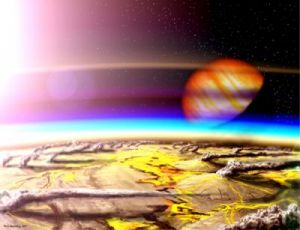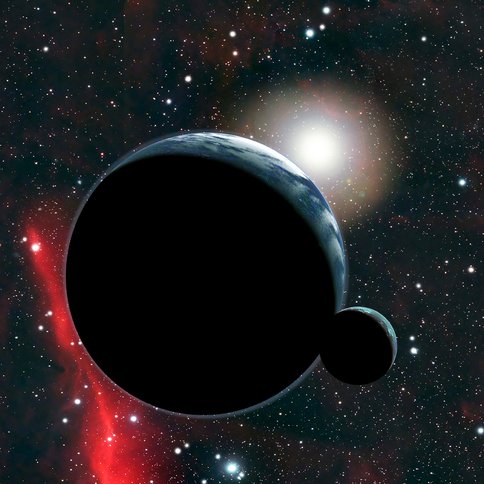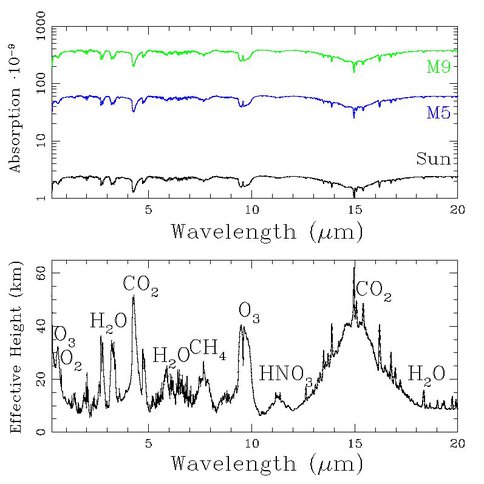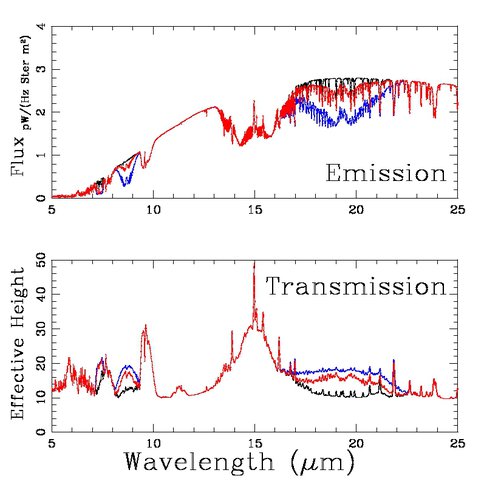2010 Annual Science Report
 Massachusetts Institute of Technology
Reporting | SEP 2009 – AUG 2010
Massachusetts Institute of Technology
Reporting | SEP 2009 – AUG 2010
Modelling Planetary Albedo & Biomarkers in Rocky Planets'/moons Spectra
Project Summary
The recent discovery of several potentially habitable Super-Earths (planets up to about 10x the mass of our own Earth that could be rocky) and the first nearby super-Earth planets around the habitable Zone of Gl581, has proven that we can already detect potentially habitable planets and makes this research extremely relevant. We model atmospheric spectral signatures, including biosignatures, of known and hypothetical exoplanets that are potentially habitable.
The atmospheric characterization of such Super-Earths and potentially habitable Moons, will allow us to explore the condition on the first detectable rocky exoplanets and potentially characterize the first detectable Habitable Exoplanet.
Project Progress
We focus on two topics from the work of Kaltenegger & Sasselov in 2010
The search for extrasolar rocky planets has already found the first transiting rocky super-Earth, Corot 7b, with a surface temperature that allows for magma oceans. To characterize such a planet as well as potential habitable Moons around EGP and the potential and signs of emergence of complex life, we investigate several scenarios:
CHARACTERIZING POTENTIALLY HABITABLE EXOMOONS
Habitable-zone exomoons may be detected in the near future with missions like Kepler and could be orbiting their planet at a distance that allows for spatially separate transit events. In that case, transmission spectroscopy of Earth-like exomoons is a unique potential tool to screen them for habitability in the near future, especially for Mstars (see Fig.1 and Fig.2). Spatially separating the exomoons from their parent planet improves their detectability because their absorption signature is about 2 orders of magnitude lower than the absorption features of en EGP spectra. We show that the number of transits needed under idealized conditions and viewing geometry is feasible using JWST for the sample of the closest M stars — under the assumption that these stars have Earth-like exomoons orbiting an EGP in the HZ of their host star. (Kaltenegger 2010)
Fig.1: Artist impressionof an exomoon (credit D. Aguilar, CfA). Fig.1: Artist impression (credit D. Aguilar, CfA) Fig.1
Fig.2: Detecable spectral features of an Earth-like exomoon in transmission and direct imaging. Fig.2: Detecable spectral features of an Earth-like exomoon in transmission and direct imaging (Kaltenegger 2010)
VOLCANIC ERUPTIONS ON EXOPLANETS
We ask if we could distinguish rocky planets with recent major volcanism by remote observation. We show that large-scale explosive volcanism can be remotely observed on exoplanets around the closest stars using sulfur dioxide as a chemical proxy. We develop a model for volcanic eruptions on an Earth-like exoplanet based on the present day Earth, derive the observable features in emergent and transmission spectra for multiple scenarios of gas distribution and cloudcover. We have derived the observable features for primary and secondary eclipse measurements and discussed the likelihood of observing volcanism on Earth to super-Earth exoplanets (Kaltenegger, Henning, Sasselov 2010) see Fig 3 and Fig.4.

Fig.3: artist impression of a volcanoes on a rocky planet (credit W. Henning, Harvard). Fig.3: Artist impression of a volcanoes on a rocky planet (credit W. Henning, Harvard)
Fig.4: Detectable spectral features of volcanic eruptions on exoplanets for a 1x, 10x and 100x Pinatubo eruption (Kaltenegger et al. 2010)
Publications
-
Alibert, Y., Broeg, C., Benz, W., Wuchterl, G., Grasset, O., Sotin, C., … White, G. J. (2010). Origin and Formation of Planetary Systems. Astrobiology, 10(1), 19–32. doi:10.1089/ast.2009.0372
-
Brack, A., Horneck, G., Cockell, C. S., Bérces, A., Belisheva, N. K., Eiroa, C., … White, G. J. (2010). Origin and Evolution of Life on Terrestrial Planets. Astrobiology, 10(1), 69–76. doi:10.1089/ast.2009.0374
-
Dvorak, R., Pilat-Lohinger, E., Bois, E., Schwarz, R., Funk, B., Beichman, C., … White, G. J. (2010). Dynamical Habitability of Planetary Systems. Astrobiology, 10(1), 33–43. doi:10.1089/ast.2009.0379
-
Fridlund, M., Eiroa, C., Henning, T., Herbst, T., Kaltenegger, L., Léger, A., … White, G. J. (2010). A Roadmap for the Detection and Characterization of Other Earths. Astrobiology, 10(1), 113–119. doi:10.1089/ast.2009.0391
-
Fridlund, M., Eiroa, C., Henning, T., Herbst, T., Lammer, H., Léger, A., … Kaltenegger, L. (2010). The Search for Worlds Like Our Own. Astrobiology, 10(1), 5–17. doi:10.1089/ast.2009.0380
-
Grenfell, J. L., Rauer, H., Selsis, F., Kaltenegger, L., Beichman, C., Danchi, W., … White, G. J. (2010). Co-Evolution of Atmospheres, Life, and Climate. Astrobiology, 10(1), 77–88. doi:10.1089/ast.2009.0375
-
Kaltenegger, L., & Sasselov, D. (2009). DETECTING PLANETARY GEOCHEMICAL CYCLES ON EXOPLANETS: ATMOSPHERIC SIGNATURES AND THE CASE OF SO 2. The Astrophysical Journal, 708(2), 1162–1167. doi:10.1088/0004-637x/708/2/1162
-
Kaltenegger, L., & Selsis, F. (2009). Characterizing habitable extrasolar planets using spectral fingerprints. Comptes Rendus Palevol, 8(7), 679–691. doi:10.1016/j.crpv.2009.07.001
-
Kaltenegger, L., Eiroa, C., & Fridlund, C. V. M. (2009). Target star catalogue for Darwin Nearby Stellar sample for a search for terrestrial planets. Astrophysics and Space Science, 326(2), 233–247. doi:10.1007/s10509-009-0223-3
-
Kaltenegger, L., Eiroa, C., Ribas, I., Paresce, F., Leitzinger, M., Odert, P., … White, G. J. (2010). Stellar Aspects of Habitability—Characterizing Target Stars for Terrestrial Planet-Finding Missions. Astrobiology, 10(1), 103–112. doi:10.1089/ast.2009.0367
-
Lammer, H., Selsis, F., Chassefière, E., Breuer, D., Grießmeier, J-M., Kulikov, Y. N., … White, G. J. (2010). Geophysical and Atmospheric Evolution of Habitable Planets. Astrobiology, 10(1), 45–68. doi:10.1089/ast.2009.0368
-
Schneider, J., Léger, A., Fridlund, M., White, G. J., Eiroa, C., Henning, T., … Tinetti, G. (2010). The Far Future of Exoplanet Direct Characterization. Astrobiology, 10(1), 121–126. doi:10.1089/ast.2009.0371
- Kaltenegger, L. (2010). Characterizing Habitable Exo-Moons. ApJL, 711: L1-L6.
- Kaltenegger, L., Henning, W. & Sasselov, D. (2010). Characterizing Volcano planets. ApJ.
- Kaltenegger, L., Selsis, F. & et al. (2010). Characterization of Terrestrial Exoplanets and Detection of Biomarkers. Astrobiology, 10.
- Segura, A. & Kaltenegger, L. (2010). Search for Habitable Planets. In: Navarro-González, V.A.B.a.R. (Eds.). Astrobiology: Emergence, Search and Detection of Life. merican Scientific Publishers.
-
PROJECT INVESTIGATORS:
-
PROJECT MEMBERS:
Lisa Kaltenegger
Co-Investigator
Dimitar Sasselov
Co-Investigator
Phoebe Cohen
Unspecified Role
-
RELATED OBJECTIVES:
Objective 1.1
Formation and evolution of habitable planets.
Objective 1.2
Indirect and direct astronomical observations of extrasolar habitable planets.
Objective 4.1
Earth's early biosphere.
Objective 4.2
Production of complex life.
Objective 6.2
Adaptation and evolution of life beyond Earth
Objective 7.2
Biosignatures to be sought in nearby planetary systems


